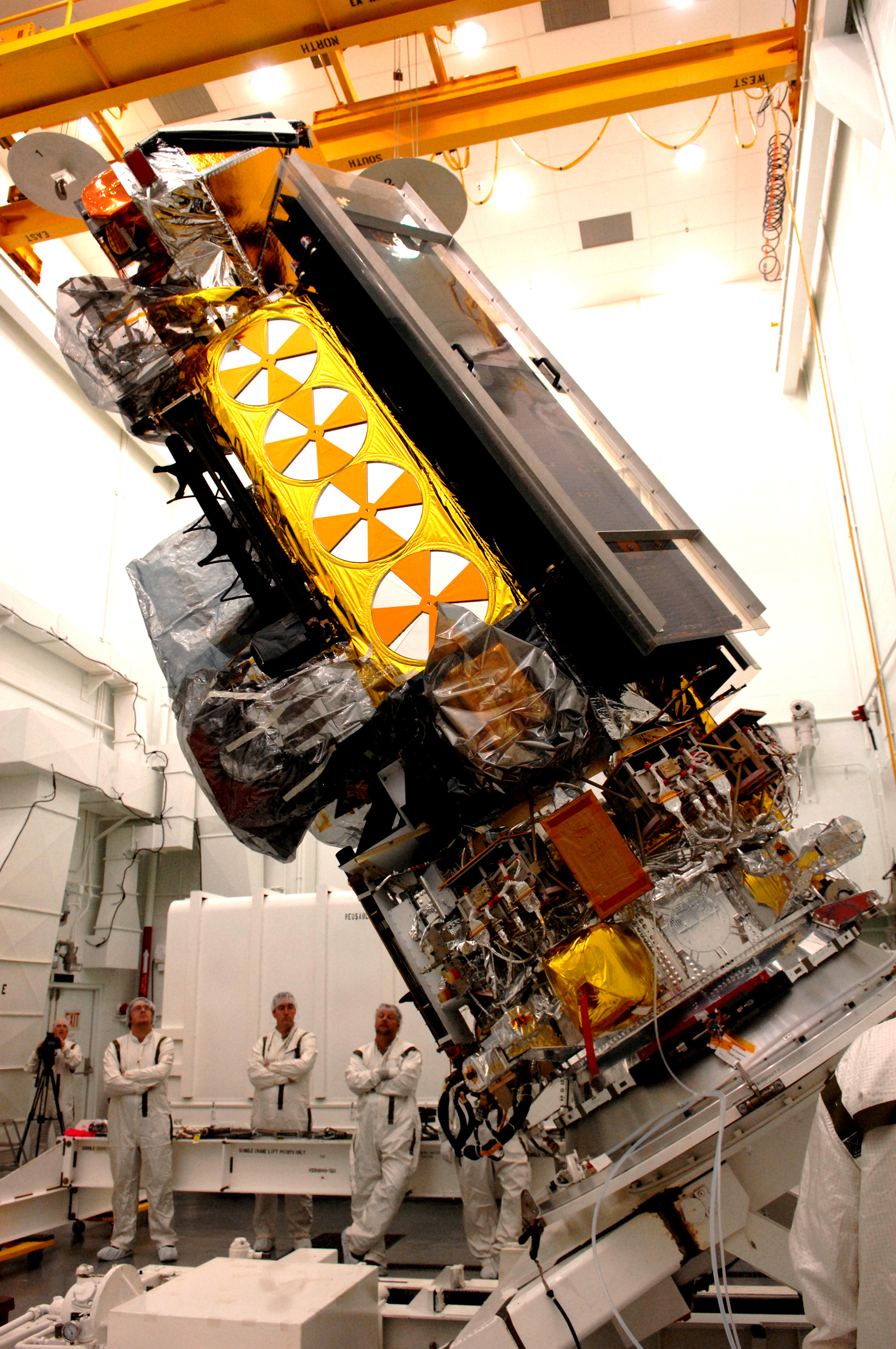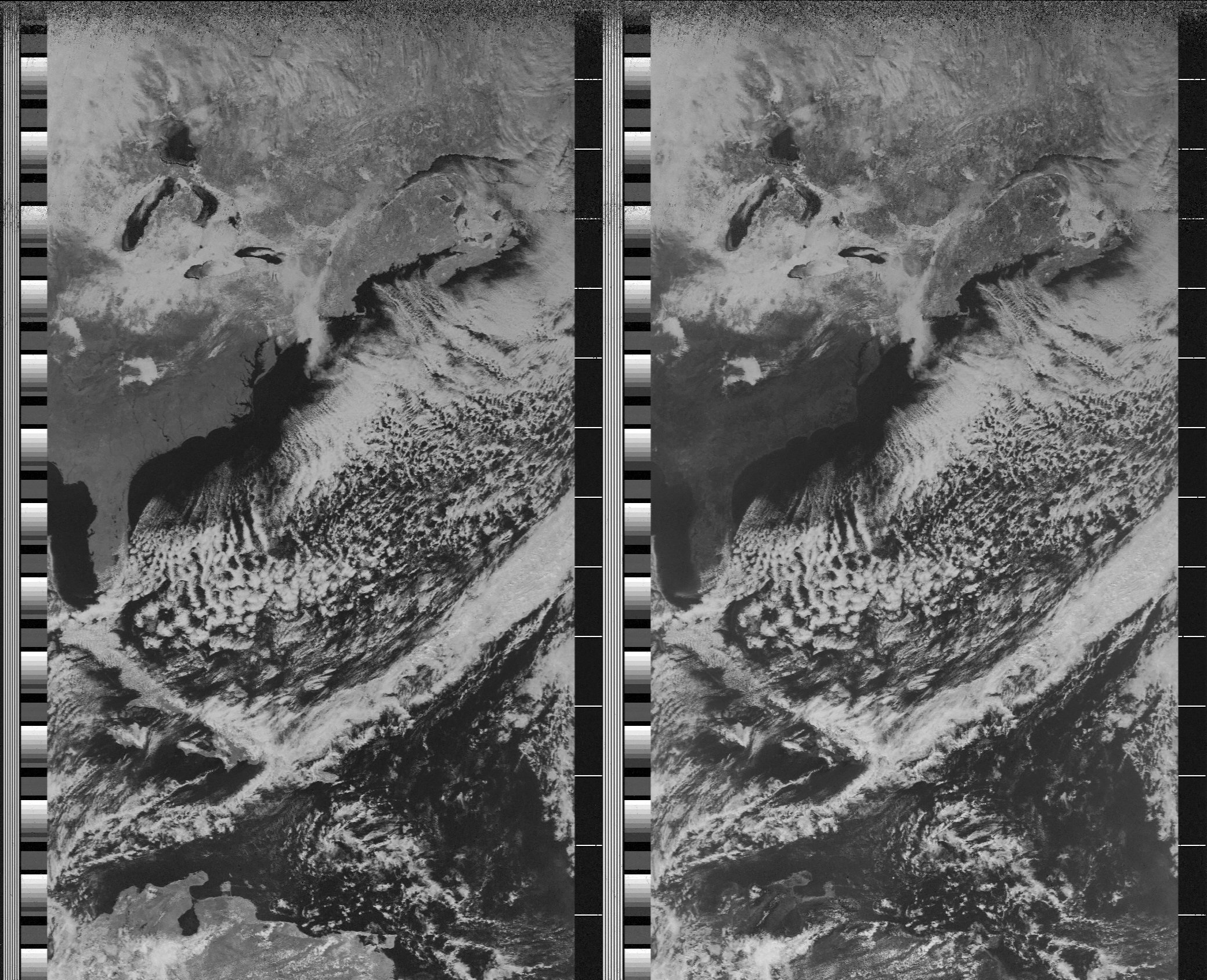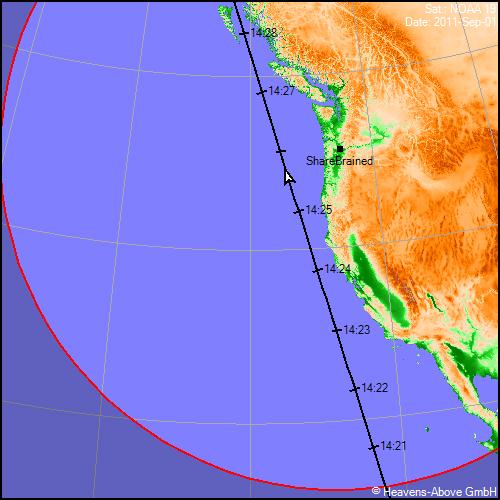Signals from Space! (part 1)
A few weeks ago, I posted about an inexpensive software radio receiver product I'm working on. Joby suggested last week that I try and receive weather satellite signals – yes, from SPACE! I was skeptical that I could pick up such a small and exotic signal with my modest hardware, but decided to give it a shot. Even if it didn't work, I was sure I'd learn a few things in the process.

Joby was interested in receiving APT (automatic picture transmission) signals from the NOAA POES (polar operational environmental satellite). POES satellites orbit the earth every 102 minutes, and scan the entire Earth twice a day. They beam back radio signals containing images that we see every time we check the weather.

I checked out the status of the POES satellites. NOAA-19 seemed like my best bet for reception of an APT signal on 137.1MHz. So I consulted Heavens Above (a great planet/star/satellite tracking Web site) to see when NOAA-19 would go over my town.

A few minutes before NOAA-19 was due to go overhead, I scrambled outside with my laptop, radio board, and cheap telescoping antenna. I hooked everything up and enticed my wife outside to help. As she monitored the waterfall spectrum on the computer, I waved the antenna around, trying to get the strongest possible signal. And here's what we caught:
Wow! I didn't expect my radio and antenna to be sensitive enough to receive a 10-Watt signal from 1,000 kilometers away! That signal should be strong enough to decode – which I'll do in an upcoming post. Until then, stay tuned for tomorrow's post: "Doppler Shift: How to calculate the speed of a satellite from your back yard"!
On to part 2 (computing satellite speed with "Doppler" shift) or part 3 (decoding the signal).
Comments
I've just checked - yes, this is the Platonic Form of "Cool".
Please tell me this is the early days of a work-in-progress new product from ShareBrained? :)
@Jeffrey: You bet! I'm hoping to build a super flexible but quite inexpensive radio that can receive virtually any narrowband signal between 100MHz and 1GHz. It'd be great for anybody who wants to explore the zillions of weird and wonderful signals floating around the ether these days. Right now, I'm recording signals from the tire pressure monitoring systems of the cars driving by my house…